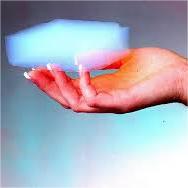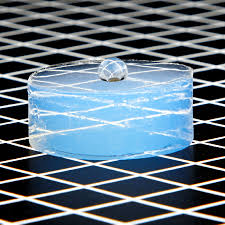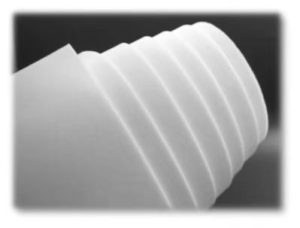Professional industry ceramic supplier, silicon nitride, silicon carbide, aluminum nitride and any other kinds of ceramics.
PRODUCT PARAMETERS
Description
Overview of Nanoporous Flexible Aerogel Thermal Insulation Blanket
Nanoporous Flexible Aerogel Thermal Insulation Blanket is a synthetic porous ultralight material derived from a gel, in which the liquid component has been replaced with a gas. The result is a solid with extremely low density and low thermal conductivity, often nicknamed “frozen smoke.” Despite its fragile appearance, it can be engineered to be remarkably strong, holding the title of the world’s best insulating solid material.
Features of Nanoporous Flexible Aerogel Thermal Insulation Blanket
-
World’s Lowest Thermal Conductivity: Provides unparalleled insulation performance, far superior to traditional materials.
-
Extremely Low Density: One of the lightest solid materials known to man, with a composition of up to 99.8% air.
-
High Surface Area: Possesses an incredibly large internal surface area, making it valuable for filtration and absorption applications.
-
Versatile Composition: Can be made from various materials, including silica, carbon, and metal oxides, each with unique properties.
-
Exceptional Porosity: Its nanoporous structure is responsible for its outstanding insulating capabilities.
Specifications of Nanoporous Flexible Aerogel Thermal Insulation Blanket
This insulation blanket uses advanced nanoporous aerogel technology. It provides outstanding thermal performance. The material has extremely small pores. These pores trap air tightly. This minimizes heat transfer through conduction. It stops heat loss very effectively. This makes it perfect for saving energy.
The blanket is highly flexible. It bends easily around pipes and tight spaces. It fits complex equipment shapes without problems. This flexibility allows simple installation. Workers can handle it quickly. It saves time during setup.
The material is strong and durable. It resists crushing under pressure. It holds its shape over time. This ensures long-term insulation performance. It lasts for many years without failing. Users avoid frequent replacements.
It handles high heat well. The blanket withstands temperatures above 1000°C. It does not burn easily. It meets strict fire safety rules. This makes it safe for demanding industrial settings. Factories use it without worry.
The blanket is very light. It adds almost no extra weight. It works well for vehicles and aircraft. It helps maintain even temperatures. It prevents heat leaks efficiently.
This insulation suits many uses. It is great for pipes in factories. It insulates valves and tanks effectively. It works in power plants and refineries. It fits in construction projects too. It controls building temperatures reliably.
Applications of Nanoporous Flexible Aerogel Thermal Insulation Blanket
This insulation blanket uses advanced nanoporous aerogel. Aerogel is a special material with tiny holes. These holes trap air. Trapped air blocks heat transfer well. The blanket feels flexible and soft. You can wrap it around pipes easily. It bends to fit different shapes. This makes installation simple.
The main job is keeping heat in or out. It works in very hot places. It works in very cold places too. Temperatures don’t matter much. It stops heat moving through surfaces. Buildings use it inside walls. They use it under roofs. It keeps indoor temperatures steady. People use less energy for heating or cooling. Bills go down.
Factories need this insulation. Machines and pipes get extremely hot. Workers must stay safe. The blanket covers hot parts. It lowers surface temperatures. Touching is safer. It saves energy in industrial processes. Oil and gas sites use it outdoors. It withstands tough weather conditions. Wind and rain don’t ruin it quickly.
Moving things need insulation also. Trucks carry temperature-sensitive goods. The blanket lines truck walls. It protects cargo from outside heat or cold. Ships use it for similar reasons. Aircraft use it in certain sections. Weight is important. This material is very light. It doesn’t add much load.
Special uses exist too. Firefighters wear protective gear. The blanket material can be part of suits. It adds heat protection. Some clothing uses it for extreme cold. Camping gear benefits. Sleeping bags stay warmer. Electronics sometimes need heat shields. Small aerogel pieces help here. Consumer products use it occasionally.
Company Profile
Tanki New Materials Co.Ltd. focus on the research and development, production and sales of ceramic products, serving the electronics, ceramics, chemical and other industries. Since its establishment in 2015, the company has been committed to providing customers with the best products and services, and has become a leader in the industry through continuous technological innovation and strict quality management.
Our products includes but not limited to Aerogel, Aluminum Nitride, Aluminum Oxide, Boron Carbide, Boron Nitride, Ceramic Crucible, Ceramic Fiber, Quartz Product, Refractory Material, Silicon Carbide, Silicon Nitride, ect. please feel free to contact us.

Payment Methods
T/T, Western Union, Paypal, Credit Card etc.
Shipment Methods
By air, by sea, by express, as customers request.
5 FAQs of Nanoporous Flexible Aerogel Thermal Insulation Blanket
Here are five common questions about nanoporous flexible aerogel thermal insulation blankets:
What is this blanket made of? It is made mostly from silica aerogel. Silica aerogel is a special material full of tiny pores. These pores trap air inside. Trapped air slows down heat transfer very well. The aerogel is reinforced with fibers. These fibers make the blanket flexible and strong. You can handle and install it easily.
How does it keep heat in or out? The key is the nanoporous structure. The pores are extremely small, mostly nanometers wide. Air molecules cannot move freely inside these tiny spaces. This reduces heat moving through conduction and convection. Radiation heat transfer is blocked by additives in the aerogel. This triple action gives outstanding insulation performance.
Where can I use this insulation? You can use it in many places needing temperature control. It works well for insulating pipes carrying hot or cold fluids. It protects tanks storing heated or cooled liquids. It insulates ducts in HVAC systems. It suits industrial processes requiring precise heat management. It is also used in buildings for better energy efficiency.
Why is it better than fiberglass or foam? It insulates much better than fiberglass or mineral wool. You need much thinner layers to get the same insulation. It handles higher temperatures than most foam insulations. It does not melt or degrade easily under heat. It lasts longer and performs better over time. The thin profile saves space too.
Is the material safe? The silica aerogel itself is generally safe. It is non-toxic and non-combustible. The reinforcing fibers are usually safe mineral or glass types. Some older versions contained small fibers needing careful handling. Newer products often use low-dust or dust-suppressed formats. Always follow the manufacturer’s safety instructions. Wear gloves and a mask during installation if recommended.
REQUEST A QUOTE
RELATED PRODUCTS

Aerogel High Quality Alumina Silicate Heat Insulation Aerogel Ceramic Fiber Board

Construction heat insulation silica aerogel paint anti scalding nano paints and coatings low thermal conductivity coating layer

Whole 10/20/30mm Silica Aerogel Board Sheet Heat insulation Aerogel panel blanket custom aerogel insulation

10mm fireproof and waterproof silica aerogel insulation blanket with aluminium foil

Aerogel thermal insulation blanket low thermal conductivity Aerogel insulation cotton/film



